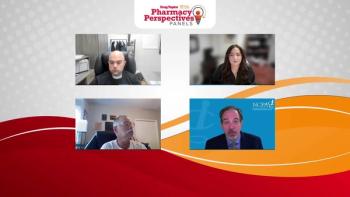
Confessions of a counter-detailer, part 3: Patient/prescriber advocate
One area that has remained cloudy for prescribers and patients is: "How much does this medication actually cost?"
Paying the price
Physicians (and pharmacists) tend to be "creatures of habit." They prescribe medications because they become familiar with them and know what to expect in terms of patient response, side effects, and drug interactions. In the case of generics, most agents have been available for 10 to 20 years, so prescribers become very familiar with them while they're brand-only.
The hidden side to physicians and patients, however, is: "Who is paying for the bulk of the medication cost?" Regardless of using a patient copayment discount card, the payer (insurer or employer) is ultimately paying that cost.
The figures are staggering
The difference between the monthly cost of a generic compared with a brand can be staggering. Let's use the example of brand proton pump inhibitor "A," which costs $8 per tablet. Assume 1 pill per day at $8 per day multiplied by 365 days of the year equals $2,920 per year. Generic proton pump inhibitor "B" at an equivalent dose costs $0.15 per pill or around $55 per year. That's a yearly savings to the payer of approximately $2,865 per patient per year for the brand medication claim. When I share this example with physicians they are blown way. Imagine the cumulative effect of 1 interaction with 1 physician who sees 20-40 patients per day. Imagine the savings to payers with hundreds to millions of covered lives. One pharmacist. One interaction.
An important role
As part of my counter-detailing activities with Advocate Physician Partners, I develop pocket guides and wall charts with comparative prices of brand and generic medications. I share these resources with physicians, nurse practitioners, and physician assistants. Most can't believe the incredible difference in prices between brand and generic medications.
Pharmacists have access to medication cost information. By compiling comparative cost information into medical specialty-specific or therapy-specific formats and then providing these tools to prescribers, pharmacists may provide an invaluable service.
Educating patients on the cost to the payer is also important in helping to control increases in health insurance premiums that include a prescription drug benefit. The pharmacist is in the best position to be a physician advocate by providing actionable information to help them take better care of their patients. Similarly, by developing such tools and providing them to patients, the patient may be better informed when having medication-related conversations with their physicians.
To read the other 2 articles in this series (published in the April and October 2011 issues), go to
Mark Greg is a clinical pharmacist with Advocate Physician Partners in Oak Brook, Ill. E-mail him at
.
Newsletter
Pharmacy practice is always changing. Stay ahead of the curve with the Drug Topics newsletter and get the latest drug information, industry trends, and patient care tips.






































































































































